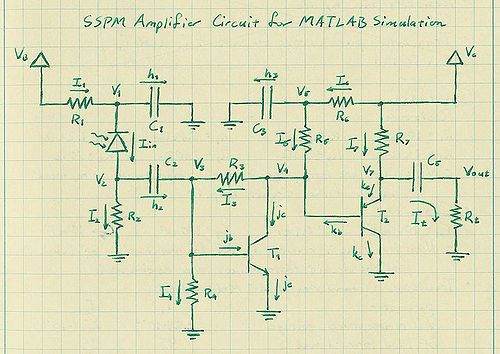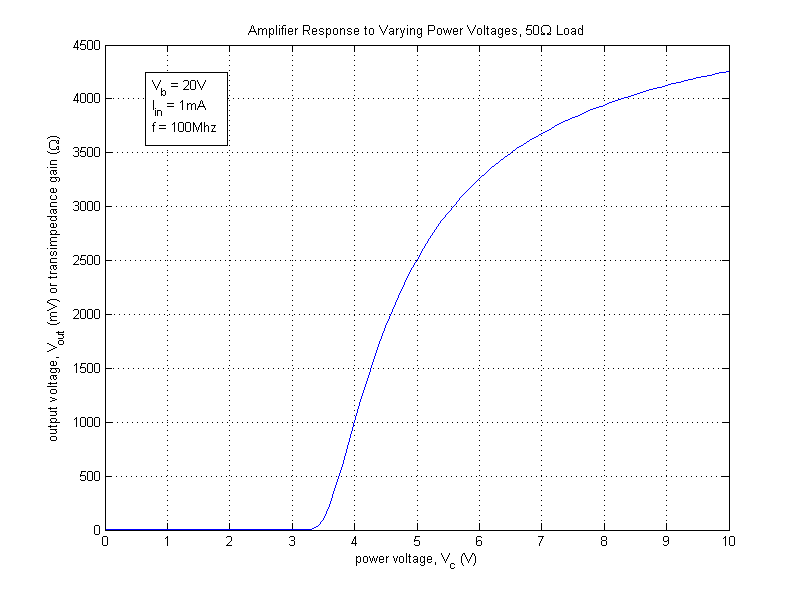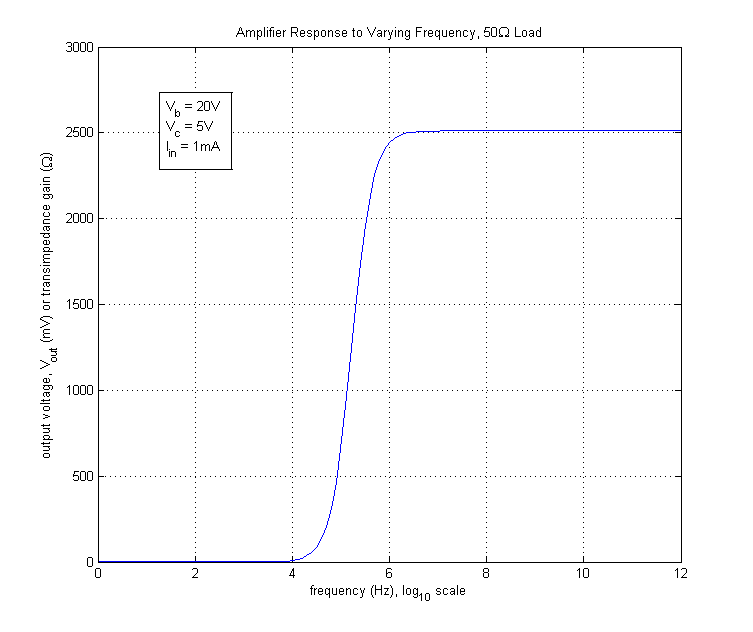Difference between revisions of "SiPM Amplifier"
Senderovich (talk | contribs) |
Senderovich (talk | contribs) |
||
| Line 3: | Line 3: | ||
== The circuit diagram == | == The circuit diagram == | ||
| − | [[Image:SSPM Amplifier Circuit Diagram.jpg|thumb| | + | [[Image:SSPM Amplifier Circuit Diagram.jpg|thumb|500px|Circuit diagram]] |
The amplifier circuit diagram shown to the right was developed through combining the diagram supplied by Photonique (lacking component values, and having several extra components) and the physical circuit (having most components labeled). | The amplifier circuit diagram shown to the right was developed through combining the diagram supplied by Photonique (lacking component values, and having several extra components) and the physical circuit (having most components labeled). | ||
Revision as of 02:51, 4 March 2008
The silicon photomultipliers (SiPM) we are using in our experiment were purchased from Photonique. Photonique also supplies analog electronics boards to amplify the signals from the SiPMs. This page discusses the analysis and modeling of the amplifier circuit.
The circuit diagram
The amplifier circuit diagram shown to the right was developed through combining the diagram supplied by Photonique (lacking component values, and having several extra components) and the physical circuit (having most components labeled).
The component values are shown below. The capacitors are unlabeled on any diagram, so values are not known for those components.
For information regarding the node voltages and branch currents, see the article on the MATLAB amplifier in detail.
| Part | On-chip label | Actual component |
|---|---|---|
| Resistors | ||
| R1 | 104 | 100kΩ |
| R2 | 103 | 10kΩ |
| R3 | 562 | 5.6kΩ |
| R4 | 202 | 2kΩ |
| R5 | 102 | 1kΩ |
| R6 | 510 | 51Ω |
| R7 | 241 | 240Ω |
| Transistors | ||
| VT1 | E2P (1717) | Philips BFS 17A |
| VT2 | W1S (13) | Philips BFT 92 |
MATLAB model
- Main article: MATLAB amplifier in detail
We developed a model for this circuit in MATLAB to simulate its behavior and study various parameters, especially gain as a function of power voltage. The Photonique documentation claims that the power voltage can be varied between four and nine volts in order to tune the gain of the amplifier. The MATLAB model is a linearized system of twenty-four equations, with the voltages and currents on the circuit being the twenty-four unknowns. There are four input parameters: input current (Iin, in amps), the bias voltage (Vb, in volts), the power voltage (Vc, in volts), and the frequency (f, in hertz). The resistor values are mostly the same as the ones given for the above diagram, but some were changed to fit the model to actual data. We also add a load resistor from Vout to GND, with a value of 50Ω. The transistors are described by a series of parameters from the Gummel-Poon SPICE model, and we included our best guesses of the capacitor values.
The model itself can be found here.
Responses of the model
We ran simulations of the MATLAB model while varying the input parameters to generate data on how the amplifier responds to each input. We used as a baseline test the inputs Vb = 20V, Vc = 5V, f = 100MHz, and Iin = 1mA, then varied one parameter at a time to generate responses.
Bias voltage
We varied the bias voltage from 0 to 50V. Within this range the output (Vout) does not vary at all.
Power voltage
The amplifier's response to varying the power voltage (Vc) from 0 to 10V is shown in the image below.
Note that the vertical axis can be read as either the output voltage (Vout) in mV or as the transimpedance gain in Ω.
Frequency
The amplifier's response to varying the frequency (f) is shown in the image below.
Note that the vertical axis can be read as either the output voltage (Vout) in mV or as the transimpedance gain in Ω.
Input current
Varying the input current from 0 to 2A results in a clean straight line that intersects the origin. Thus we can say that the amplifier has a transimpedance gain (programmable based on input parameters; in particular Vc) and no DC bias.


